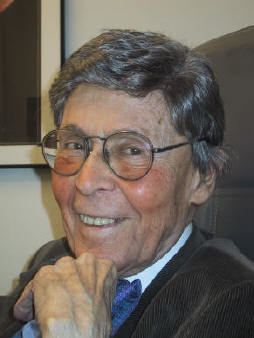Name Edgar Evia Role Photographer | Education The Dalton School | |
 | ||
Full Name Edgar Domingo Evia y Joutard Born July 30, 1910 ( 1910-07-30 ) Merida, Yucatan, Mexico Died February 10, 2003, New York City, New York, United States | ||
Edgar de Evia
Edgar Domingo Evia y Joutard, known professionally as Edgar de Evia (July 30, 1910 – February 10, 2003), was a Mexican-born American interiors photographer.
Contents
- Edgar de Evia
- Homeopathy research
- Photography
- Personalities photographed
- Editorial photography
- Books
- Commercial photography
- Relationships
- References
In a career that spanned the 1940s through the 1990s, his photography appeared in magazines and newspapers such as ' House & Garden, Look and The New York Times Magazine and advertising campaigns for Borden Ice Cream and Jell-O.

Homeopathy research
Edgar served as the research assistant to Dr. Guy Beckley Stearns, a homeopathic physician with whom he wrote and published articles and one book about homeopathy.
For Laurie's Domestic Medicine, a medical guide published in 1942, Stearns and Edgar D. Evia contributed an essay called "The New Synthesis", which was expanded that same year into a book entitled "The Physical Basis of Homeopathy and the New Synthesis". In the New England Journal of Homeopathy (Spring/Summer 2001, Vol. 10, No. 1), Richard Moskowitz, MD, called the Stearns-Evia article "a cutting-edge essay into homeopathic research that prophesied and actually began the development of kinesiology, made original contributions to radionics, and dared to sketch out a philosophy of these still esoteric frontiers of homeopathy at a time when such matters were a lot further beyond the pale of respectable science even than they are today."
Photography
Frequently producing images utilizing soft focus and diffusion, de Evia was dubbed a "master of still life" in the 1957 publication Popular Photography Color Annual. In a review of the book, The New York Times stated that "Black and white [photography] is frequently interspersed through the book and serves as a reminder that black and white still has a useful place, even in a world of color, often more convincingly as well. This is pointed up rather persuasively in the portfolio on Edgar de Evia as a 'master of still life' and in the one devoted to the work of Rene Groebil." "Editorial high-key food photography was introduced by Edgar D'Evia in 1953 for the pages of Good Housekeeping."
William A. Reedy, editor of Applied Photography, in a 1970 interview for the Eastman Kodak publication Studio Light/Commercial Camera, wrote that de Evia:
"has been a photographic illustrator in New York City for many years. His work has helped sell automobiles, food, drink, furniture and countless other products. To fashion accounts he has been known as a fashion photographer, while food people think of him as a specialist in still life. While, in fact, he is a photographer, period. He applies his considerable talent and experience to whatever the problem at hand."
Melvin Sokolsky, a fashion photographer who has created images for Harpers Bazaar and Vogue, considered Edgar de Evia one of his earliest influences, saying, "I discovered that Edgar was paid $4,000 for a Jell-O ad, and the idea of escaping from my tenement dwelling became an incredible dream and inspiration."
Personalities photographed
De Evia also produced commissioned photographic portraits of individuals, including Polish-American violinist Roman Totenberg and Ralph Lauren, American fashion designer.
Editorial photography
De Evia worked for Applied Photography, Architectural Digest, Good Housekeeping, Shaggy Lamb Fashion, and New York Magazine (December 19, 1988 Feature article on de Evia and his apartment).
Books
Books that have been illustrated with de Evia's photography include:
Commercial photography
De Evia worked for Borden Ice Cream (Lady Borden campaign 1956–1960), Celanese Corporation, Gorham Silver, hats by Mr. John of John-Frederics, Leather Industries of America, Maximilian Furs (1950s, all ads had the credit "DeEvia"), McCall's patterns (all ads had the credit "Photograph by Edgar de Evia"),.
Relationships
In the 1950s, de Evia's companion and business partner was Robert Denning, who worked in his studio and who would become a leading American interior designer and partner in the firm Denning & Fourcade.
